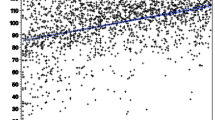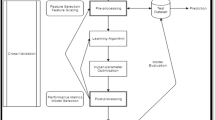Abstract
In order to meet the need for higher equipment availability and lower maintenance cost, much attention is being paid to the development of prognostic systems. Such systems support a proactive maintenance strategy by continuously monitoring the components of interest and predicting their failures sufficiently in advance to avoid disruptions during operation. Recent research demonstrated the potential of a comprehensive data mining methodology for building prognostic models from readily available operational and maintenance data. This approach builds a binary classifier that can determine the likelihood of a failure within a broad target window but cannot provide precise time to failure (TTF) estimations. This paper introduces a two-stage classification approach that helps improve the precision of TTF estimations. The new approach uses the initial methodology to learn a variety of base classifiers and then relies on meta-learning to integrate them. The paper details the model building process and demonstrates the usefulness of the proposed approach through a real-world prognostic application.
Similar content being viewed by others
References
Létourneau S, Yang C, Drummond C, Scarlett E, Valdés J, Zaluski M (2005) A domain independent data mining methodology for prognostics. In: Conference proceedings: essential technologies for successful prognostics, 59th meeting of the machinery failure prevention technology society, Virginia Beach, Virginia, USA, April 18–21, 2005
Létourneau S, Famili F, Matwin S (1999) Data mining for prediction of aircraft component replacement. IEEE Intell Syst J 59–66. Special issue on data mining
Yang C, Létourneau S (2005) Learning to predict train wheel failures. In: Proceedings of the 11th ACM SIGKDD international conference on knowledge discovery and data mining (KDD2005), Chicago, USA, August, 2005, pp 516–525
Promellec B, Riant I, Tessier-Lescourret C (2006) Precise life-time prediction using demarcation energy approximation for distributed activation energy reaction. J Phys Condens Matter 18(7):2199–2216
Sornette D, Andersen JV (2006) Optimal prediction of time-to-failure from information revealed by damage. Europhys Lett 74(5):778–784
Van der Duyn Schouten FA, Wartenhorst P (1980) Time to failure, time to repair and availability of a two unit standby system with Markovian degrading units. Technical Report BS-R9007, Center for Mathematics and Computer Science, Amsterdam, The Netherlands
Xu L, Krzyzak A, Suen CY (1992) Methods of combining classifiers and their applications to handwriting recognition. IEEE Trans Syst Man Cybern 22(3):418–435
Dzeroski S, Zenko B (2004) Is combining classifiers with stacking better than selecting the best one? Mach Learn 54:255–273
Dietterich T (2000) An experimental comparison of three methods for constructing ensembles of decision trees: bagging boosting and randomization. Mach Learn 40:139–158
Tsoumakas G, Katakis I, Blahavas I (2004) Effective voting of heterogeneous classifiers. In: Proceedings of the 15th European conference on machine learning (MCML2004), Pisa, Italy, pp 465–476
Senator TE (2005) Multi-stage classification. In: Fifth IEEE international conference on data mining (ICDM’05), pp 386–393
Provost F, Fawcett T (1997) Analysis and visualization of classifier performance: combination under imprecise class and cost distributions. In: Proceedings of international conference on knowledge discovery and data mining (KDD97)
Ling CX, Huang J, Zhang H (2003) AUC: a statistically consistent and more discriminating measure than accuracy. In: Proceedings of IJCAI 2003, pp 519–524
Drummond C, Holte R (2000) Explicitly representing expected cost: an alternative to ROC representation. In: Proceedings of the 6th ACM SIGKDD international conference on knowledge discovery and data mining, New York, pp 198–207
Hall M (2000) Correlation-based feature selection for discrete and numeric class machine learning. In: Proceedings of the 17th international conference on machine learning, pp 359–366
Smith JR, Chang SF (1997) Multi-stage classification of images from features and related text. In: 4th Europe EDLOS workshop, San Miniato, Italy, August 1997
Cakmakov D, Radevski V, Bennani Y, Gorgevik D (2004) Decision fusion and reliability control in handwritten digit recognition system. J Comput Inf Technol CIT 10:283–293
Rutkowska D, Klimala JK (2004) A multi-stage classification method in application to diagnosis of larynx cancer. In: ICAISC 2004. LNAI, vol 3070, pp 1037–1042
Cordella LP, Limongiello A, Sansone C (2004) Network intrusion detection by a multi-stage classification system. In: MCS 2004. LNCS, vol 3077, pp 324–333
Salient Systems Inc. Preventing Train Derailment. http://www.salientsystems.com
Technical report (2004) Advanced Technology Safety Initiative: Equipment Health Management System, Association of American Railroads, 24 August 2004
Lechowicz S, Hunt C Monitoring and managing wheel condition and loading. http://www.ntsb.gov/events/symp_rec/proceedings/authors/lechowicz.pdf
Gebraeel N, Lawley M, Liu R, Parmeshwaran V (2004) Residual life prediction from vibration-based degradation signals: a neural network approach. IEEE Trans Ind Electron 51(3):692–700
Grottke M, Trivedi K (2005) On a method for mending time to failure distributions. In: Proceedings of international conference on dependable systems and networks 2005, Los Alamitos, pp 560–569
Schwabacher MA (2005) A survey of data-driven prognostics. In: Proceedings of AIAA aerospace conference (AIAA 2005), Arlington, Virginia, USA, September 2005
Dzeroski S, Zenko B (2002) Stacking with multi-response model trees. In: The proceeding of international workshop in multiple classifier systems (MCS2002), pp 201–211
Wolpert D (1992) Stacked generalization. Neural Netw 5(2):241–260
Author information
Authors and Affiliations
Corresponding author
Rights and permissions
About this article
Cite this article
Yang, C., Létourneau, S. Two-stage classifications for improving time-to-failure estimates: a case study in prognostic of train wheels. Appl Intell 31, 255–266 (2009). https://doi.org/10.1007/s10489-008-0123-1
Received:
Accepted:
Published:
Issue Date:
DOI: https://doi.org/10.1007/s10489-008-0123-1




